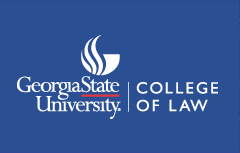Document Type
Article
Abstract
Enhanced damages in patent law are a type of punitive damage that can be awarded in the case of “egregious misconduct” during the course of patent infringement. Authorization for enhanced damages comes from 35 U.S.C. § 284, which allows the district court to increase total damages up to three times the amount of actual damages found by the jury. It is well understood that, since enhanced damages are punitive in nature, enhancement should only be considered for cases of “wanton” or “deliberate” infringement. However, determining what constitutes this “egregious” misconduct has vastly transformed over time to include a negligence standard, a two-prong recklessness standard, and recently a court-discretion standard.
The Supreme Court's 2016 decision in Halo v. Pulse the Supreme Court left the decision up to the discretion of the district courts. With this decision, the two-part framework no longer provides instruction on who decides whether to award enhanced damages. Without guidance on whether the judge or the jury determines whether to award enhanced damages, defendants will become increasingly uncertain of whether the court will find “egregious cases of misconduct” in “garden-variety cases” of infringement.
This Note discusses the impact of Halo v. Pulse on determining whether a judge or a jury decides whether willful,egregious misconduct justifies enhanced damages under 35 U.S.C. § 284. Part I of this Note introduces Section 284 of the Patent Act, examines the tests created by the Federal Circuit, and discusses historical interpretations of whether a judge or a jury should impose enhanced damages. Part II discusses the arguments made for allowing a judge or a jury to assess enhanced damages. Part III discusses a proposal for having the judge consider the issue of enhanced damages by holding a post-trial, Enhanced Damages hearing to determine the egregiousness of the case.
Recommended Citation
Brandon M. Reed,
Who Determines What Is Egregious? Judge or Jury: Enhanced Damages After Halo v. Pulse,
34
Ga. St. U. L. Rev.
389
(2018).
Available at:
https://readingroom.law.gsu.edu/gsulr/vol34/iss2/3
Included in
Civil Law Commons, Civil Procedure Commons, Common Law Commons, Constitutional Law Commons, Courts Commons, Entertainment, Arts, and Sports Law Commons, Intellectual Property Law Commons, Judges Commons, Legal Remedies Commons, Litigation Commons, Supreme Court of the United States Commons
